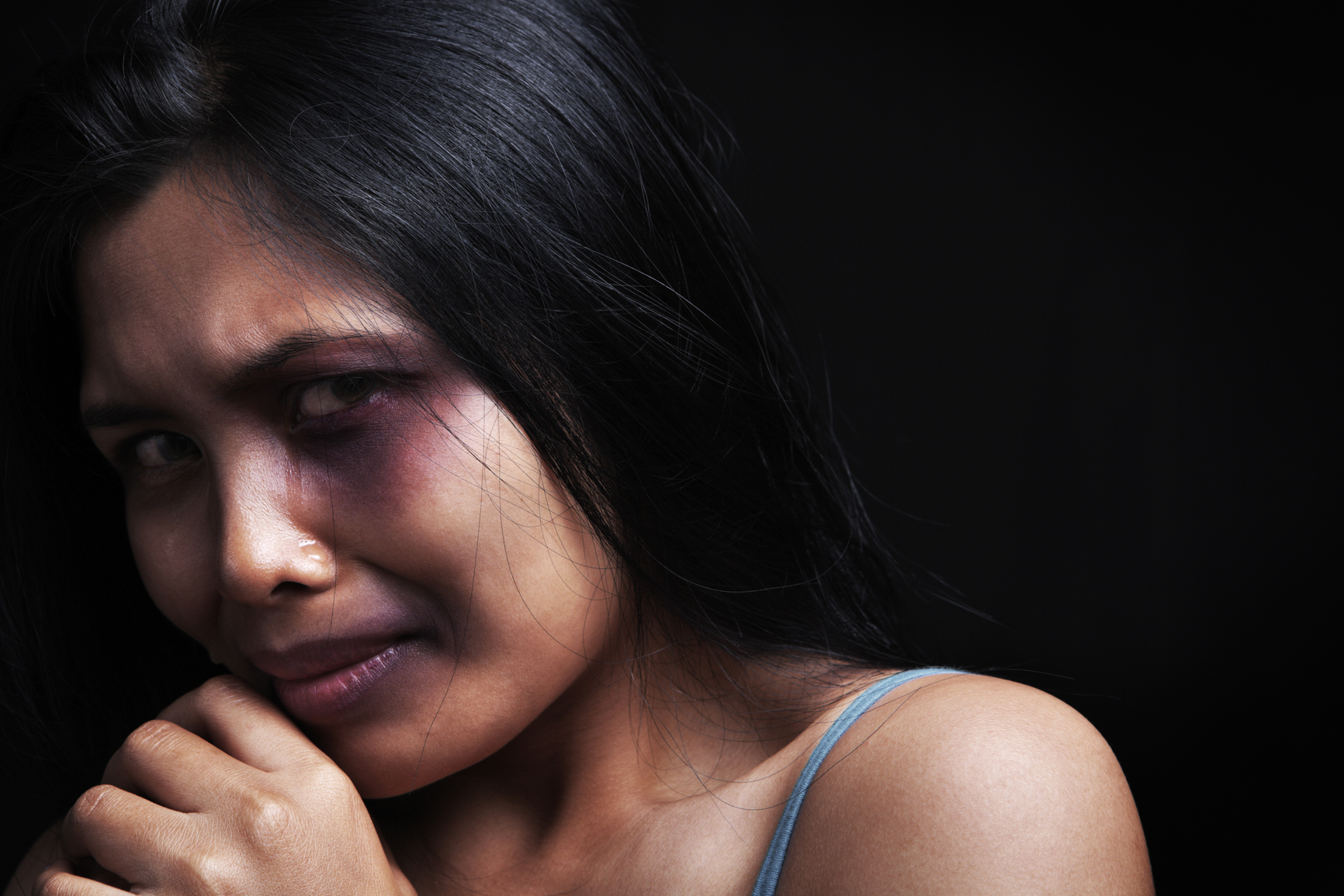In a society where cultural politics are determined by the tight corset of “traditional morality”, even the dealing out of blows strictly follows the gender divide.
In a society where cultural politics are determined by the tight corset of “traditional morality”, even the dealing out of blows strictly follows the gender divide.
Violence and Gender Stereotypes
An English information campaign called «Family Without Fear» emphasizes that domestic violence has nothing to do with gender or sexual orientation. The same is also true of our innate biological characteristics. Nobody is born to be a victim: the infamous victimity forms gradually, forcing out and replacing productive defense mechanisms. And all the more naive it is to assume that having relationships with people of our own sex can protect us from facing the partner’s aggression. However, this does not prevent stereotypes from further existing in our consciousness.
When popular LGBT websites touch upon the topic of domestic violence, they often follow the pattern used for covering violence in heterosexual families. LGBT families’ experience may be represented as a syncretic part of the general mass of domestic violence cases. Ph.D. Richard Niolon who does research on domestic abuse in LGBT couples says that even statistics on instances of abuse in LGBT families were not systematically collected until 1987. Characteristically, articles on domestic violence among LGBT people mostly target men. They use they same patriarchal scenario treating male aggression as expected behavior.
For one instance of violence against men there are more than twelve instances of violence against women, which is often used as an argument for ignoring the topic of violence against men. Erasing domestic violence outside the patriarchal model does great harm to the gay community’s awareness of violence in same-sex families. Denying the idea that men can be victims and women aggressors leads to denying the very possibility of violence in LGBT families.
The Cycle of Violence

Photo by John Gilchrist
English-language resources on domestic violence use a broader phrase: domestic violence and abuse. Abuse is a term that allows to reflect the nature of domestic violence more precisely. It emphasizes the fact that the main goal of violence is power and control over the victim. When the association of violence in general and physical violence gets broken, it’s easier to see how traumatic and dangerous the experience of other forms of mistreatment is.
Although family abuse can take truly horrifying forms, abusers should not be ascribed infernal monstrosity. An abusive partner is not a coldblooded misanthrope. The victim-abuser relationship is rather a form of parasitism where one partner uses the other’s (donor’s) resources to fully function. A symbolic depiction of family violence is not the giant ape King Kong with a frail blond in his arms, but rather a vampire from a gothic novel.
«The goal of abuse is to drain the victim of their energy surreptitiously and lovingly, thus nourishing one’s own sense of self-worth. This is why abuse rarely starts with beating.»
To understand how deep the reasons for silence around domestic abuse are and how this problem is refracted in LGBT families, we need to understand the mechanism of abuse. As we have already mentioned, the goal of abuse is control, i.e. replacing the Subject—Subject communicative scheme with a Subject— Manipulatable Object relationship. Domestic abuse is a cyclical action, a sort of rollercoaster. From a situation of comfort, the victim slowly moves into tension and its peak, direct violence (beating, sexual violence, threats, insults, etc.) and then rolls back into the comfort zone where the abuser demonstrates remorse. Eventually the cycle accelerates and going from the comfort stage to the aggression stage takes less time.
Alongside the internal tension, the victim and the abuser also get a certain payoff from society. It is external tension, the environment’s reaction that is indirectly also part of the mechanism of abuse. In this context, domestic abuse is abuse within the couple. This means that people in the partners’ environment know them as a couple rather than only individually: the community has expectations of them, ideas about them as a couple, and there is, after all, the couple’s reputation. All that is an important part of our social capital. Our family’s “success” is an important feature our personality is judged by.
The Victim’s Shame and Guilt
Society’s expectations and roles ascribed to family members are largely the basis of victim blaming. Victim blaming may take different forms of excusing the aggressor. For instance, if a partner who faces psychological pressure or intimidation within the family seeks help, people they talk to may try to provide a “right interpretation” of the abuser’s actions, find a logical explanation for the abusive behavior in the victim’s actions. Friends seem to act in complicity with the abuser, denying the victim rationality and reason. Such reactions are also often rooted in gender stereotypes when people refer to certain traits allegedly having to do with one’s gender.
We are often convinced that we can resist domestic violence, sometimes even while we are being abused. The illusion of control over the situation is strengthened manifold by the stereotype about the gender role division in the victim-abuser couple, which bears a particular danger to same-sex partners. Often instances of violence in homosexual couples are replaced with a scenario of “men’s showdown” or BDSM pornographic vignettes. Besides, the deeply ingrained societal stereotype about family violence as a feature of patriarchy creates an additional psychological barrier for gay men seeking help. In theory there are therapists, shelters, organizations for supporting victims of family abuse.
The couple’s reputation has a big influence on how intensive victim blaming is. Princess Diana appeared in global press as a cheater and a bulimic on an all too regular basis but when the couple is socially deprived, for instance if it’s a family of alcoholics, the victim blaming is far stronger. With LGBT couples, the situation is considerably acuter if same-sex relationships are already stigmatized in the given society. Then the couple has a certain “social karma” to begin with, it is deprived in society’s eyes. The fact of family abuse acts to reinforce the stereotype and the victim has another barrier to speak out about the problem and ask for help. According to Richard Niolon, homophobia within the community is in direct correlation with domestic abuse in LGBT couples: if your community refuses to accept your family, it cannot recognize the abuse either.
Abuse in the Closet
What further distinguishes the perception of violence in homosexual couples for homophobic societies is the large percentage of closeted partnerships. Researchers of domestic violence in LGBT families emphasize the importance of being out for preventing abuse. R. Berger, author of the article Men Together on problems in homosexual relationships, says that living in the closet and having to make sure constantly that one’s relationship stays secret is a major stress factor for gay men and lesbians. Closeted couples often choose euphemisms to conceal the partnership's true nature and prefer to call each other friends or flatmates, which harms trust within the couple. Being in the closet also minimizes support from parents or other family members, which may be available to an abuse victim in a heterosexual couple.
Fears of being accused or devalued, exacerbated by the partner’s necessity to stay in the closet, always play into the abuser’s hands, driving the victim into the trap of guilt and shame that guarantee silence and isolation. Isolation makes it harder to stay objective about one’s situation, which, in turn, makes it easier for the abuser to use manipulation. In this sense, the victim actually helps the abuser by concealing the problem. A sign of concealing, which is also a form of psychological defense, is choosing synonyms for abuse. Substituting the image of violence with that of a conflict or sexual play is a typical abuser’s trick and the victim’s mental trap. It is far easier to tell even one’s closest friends about an “argument” than simply acknowledging one’s weakness and become a target for others’ open fire of stereotypes.
To guarantee silence, the abuser represses the victim’s usual defense mechanisms and substitutes them with new victim behavior. To do that, they may induce mistrust to other people in the victim or raise their own significance in the partner’s eyes by constantly devaluing their opinion and that of the people important to them.
«In this case, a closeted queer partner is certainly a silenced one.»
Being in the closet also opens up a lot of opportunities to further manipulate the victim, blackmail, isolate, or threaten them. The threat of outing, i.e. being forced to come out under the pressure of guilt towards one’s partner as well as requiring the partner to stay closeted as a means of ensuring their isolation are among the means used by abusers in homosexual couples that resonate with the partner’s internal unease about their sexual orientation if that issue is a point of complexes and fears for them.















